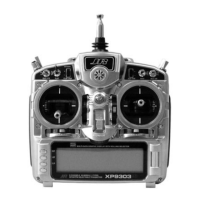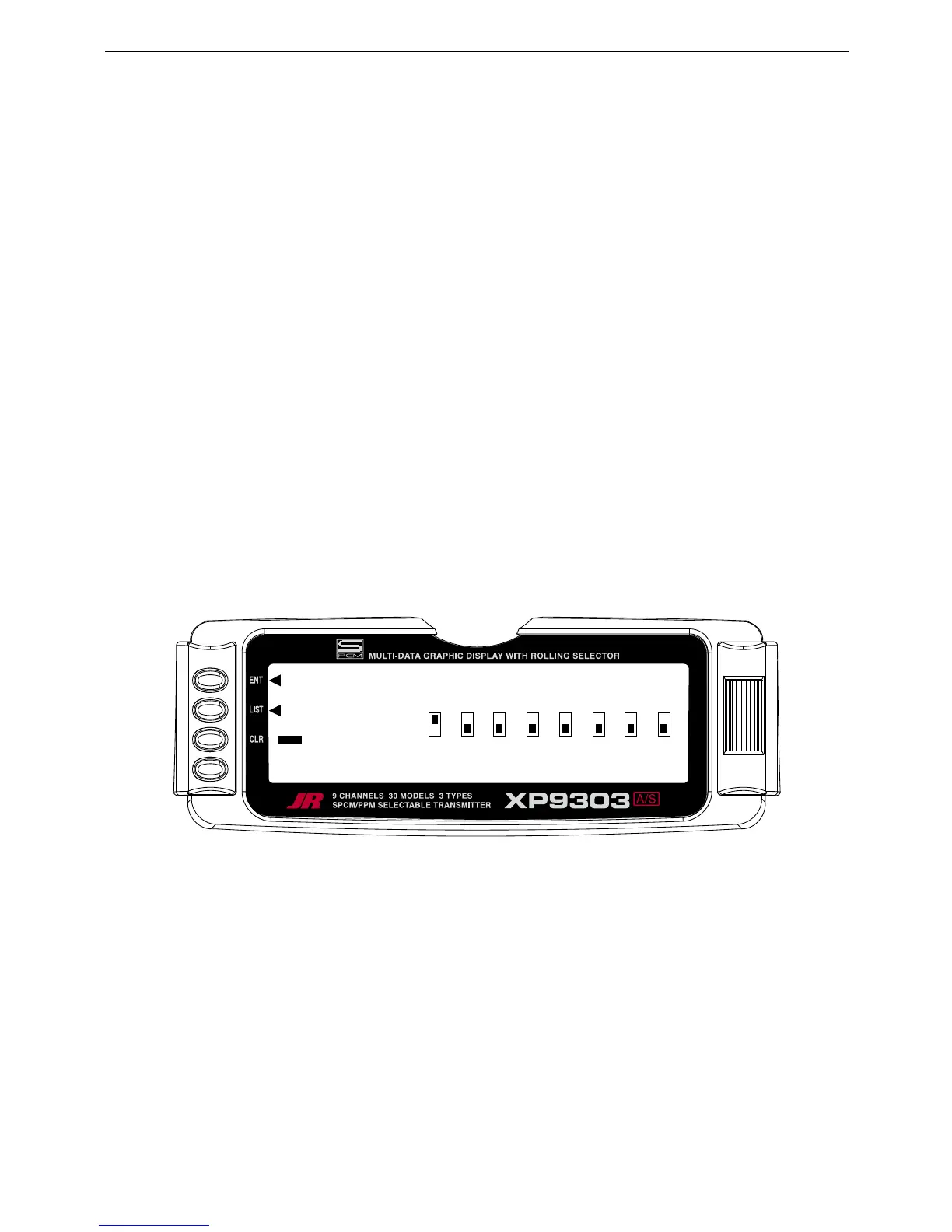FAIL SAFE
A43
Fail Safe is available only when SPCM has been
selected as the Modulation Type in the SYSTEM
Menu. The receiver must be of the PCM variety, as Fail
Safe does not function in the PPM/FM mode. Fail Safe
will appear in the FUNC.LIST only if SPCM has
been selected as the modulation type in the MODULAT
function of SYSTEM Menu.
When interference occurs on the frequency of operation,
PCM receivers do not pass the interference on to the
servos. Instead, the receiver commands the servos to
either hold their last good position (HOLD) or to move to
a pre-determined position (FAIL SAFE). Both options exist
for each channel and the settings are adjustable in the Fail
Safe function.
Many experienced pilots designate all channels as HOLD,
except for the throttle—it is commanded to assume
a Fail Safe position that corresponds to idle. In this
configuration the aircraft will continue to do whatever it
was doing before the interference occurred, except the
throttle will reduce to idle. The servos will continue to
hold their last position and the throttle will remain at
idle until the interference subsides, at which time normal
operation is resumed.
More often than not, the pilot will not realize the
system went into Fail Safe except for hearing the
throttle momentarily reduce RPM. This is also a good
configuration if interference is encountered while the
aircraft is on the ground because the throttle reduces to
idle, reducing the chances of the aircraft careening out
of control at a higher throttle setting. In the event that the
interference does not subside and the system remains
in Fail Safe, it is better for the aircraft to crash with the
engine at idle than at a higher throttle setting.
1. Run the engine in the aircraft and adjust the throttle
stick/travel and trim so the engine has a dependable
idle—perhaps a click or 2 above low idle. Leave the
throttle and trim in these positions.
2. Access the Fail Safe function by highlighting and
selecting Fail Safe in the FUNC.LIST.
3. Highlight and select THR, moving its indicator from the
HOLD position to the F.S. (Fail Safe) position. This
instructs the Fail Safe function to move the throttle
servo to a pre-determined position when the receiver
detects interference.
4. Press the CLR button next to MEMO to the left of
the display. This memorizes the current position of
all channels that are set to F.S. - in this case the
throttle which should be at idle. Whenever the RX
detects interference it will move the throttle to this
position. The remainder of the servos will hold
their last good position.

